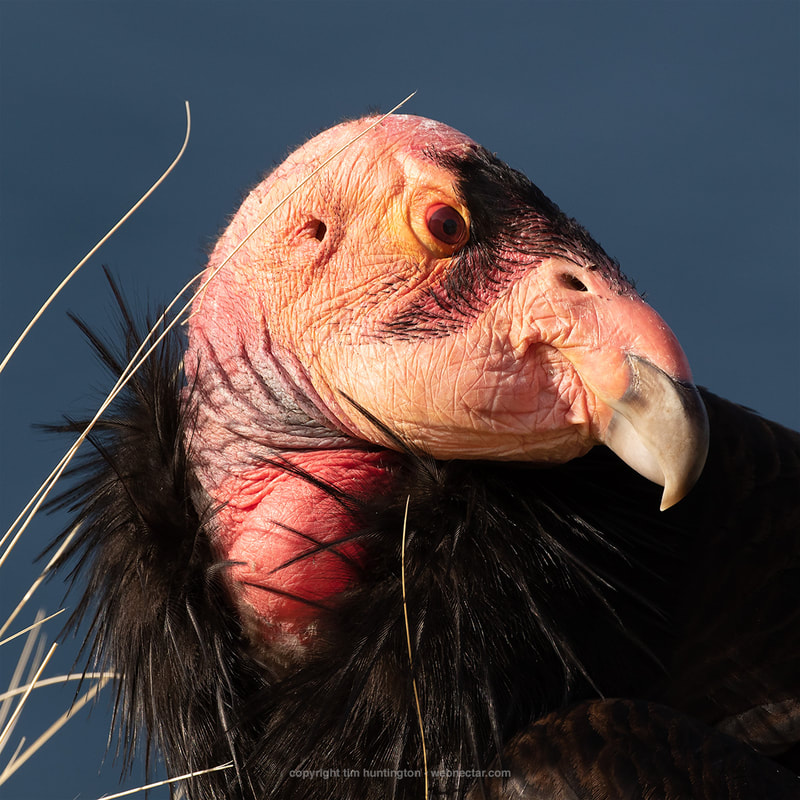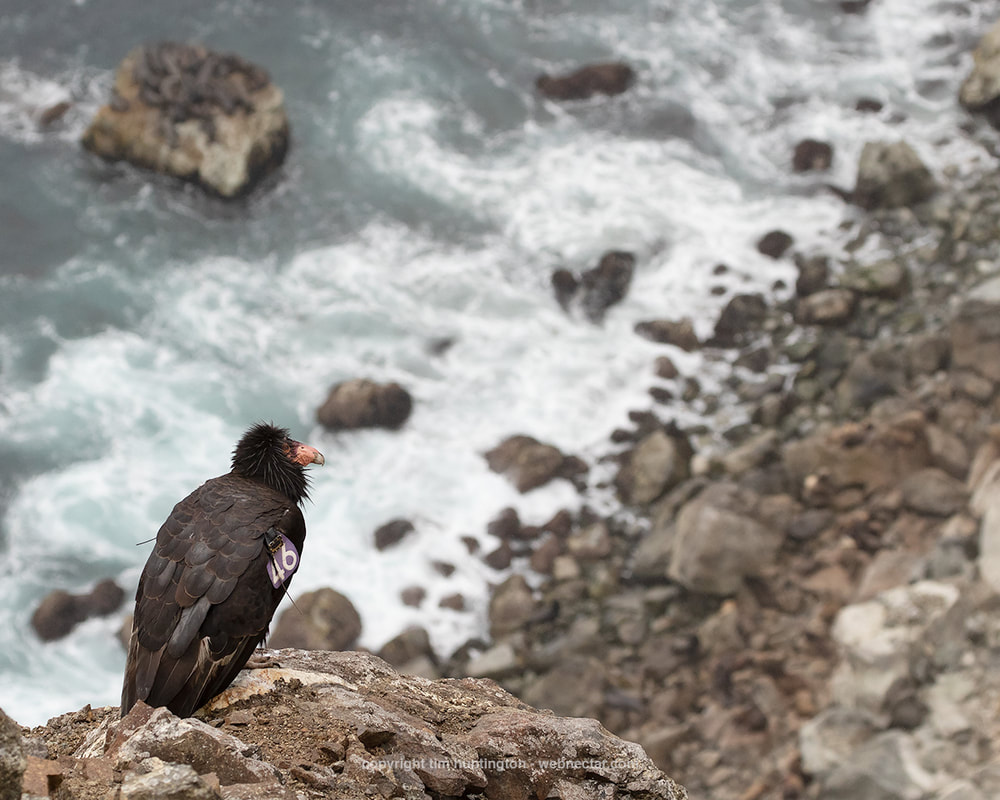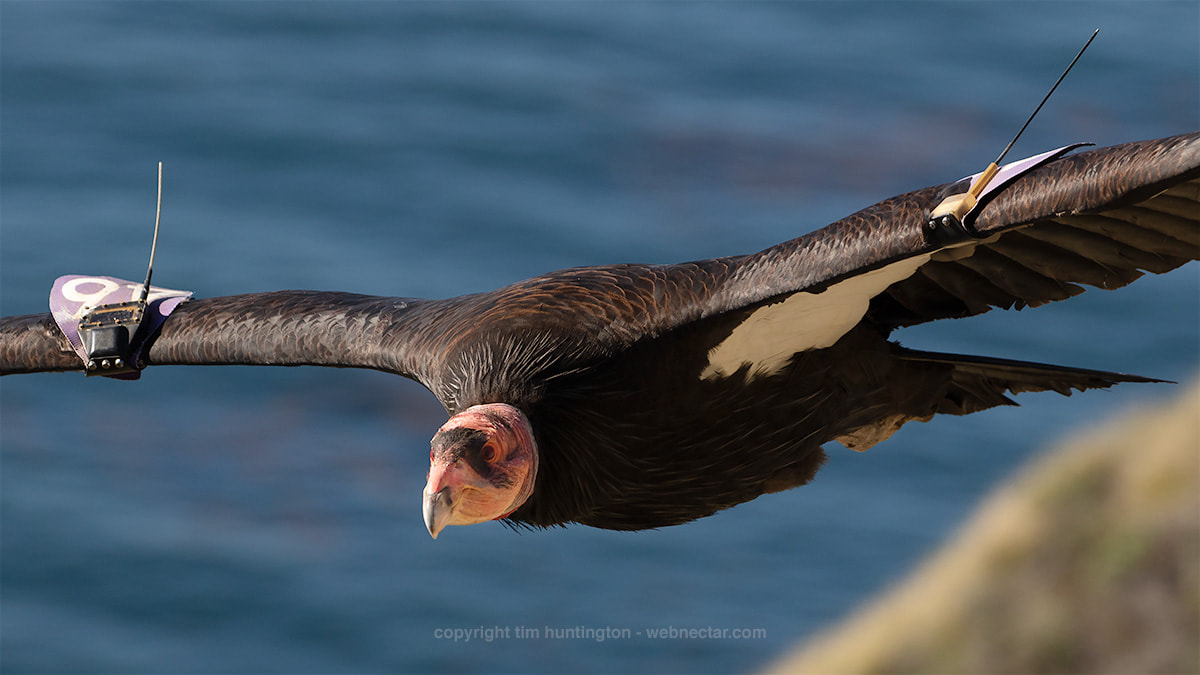Loading bio data
Condor (646) was nicknamed "Kodama", which means "Forest Spirit" in Japanese. Kodama (646) hatched in a coastal Redwood nest, deep in the Big Sur forest, by the flock's dominant pair at the time, Kingpin (167) and Redwood Queen (190). However, Kodama (646)'s life in the woods took a detour when she sustained a wing injury as a young chick before she could fledge. At three months of age, Kodama (646) was transferred to the Los Angeles Zoo Condor Care Unit. Wing injuries can be quite serious for condors, but we are happy to report that she has completely recovered.
That following winter she was brought back to Big Sur to spend time in the flight pen with three other juveniles preparing for release. She was the only female of this cohort. Upon her release into the flight pen, she immediately hopped out of her kennel, briefly stood on a platform perch, and then took off to her next perch!
From preening, to playing, to checking out her new surroundings, Kodama (646) seems to do most things with quick movements. For instance, she quickly pulled a plant from the ground that was growing in the flight pen and seemed to use it as a toy! On March 25th, 2014, she made an excellent transition into the free-flying flock when she was released. Kodama (646)'s wing is in tip-top shape; she's bright, beautiful, and flying high! She has stuck close to the Big Sur coast since her release.
In 2019, Kodama (646) nested for the first time with Amigo (204) and his foster son Fuego (470). The trio were successful in raising male condor chick, Katie’s Bird (1003), before Fuego (470) left the trio to establish his own breeding territory. Since then, Kodama (646) has remained paired with Amigo (204). In the spring of 2021, Amigo (204) and Kodama (646) reared their new chick, Little Great One (1089), who was hatched in a redwood tree nest in Big Sur.
Kodama (646) and Amigo (204) are truly a Big Sur power couple and are frequently seen feeding on dead marine life by visitors along Highway 1 and chasing other condors out of their prime nesting territory. At the beginning of the 2023 nesting season, it was determined that this iconic duo was incubating an egg which Kodama (646) laid on January 30th of that year. This egg hatched, successfully fledged and is known as Jade (1204).
That following winter she was brought back to Big Sur to spend time in the flight pen with three other juveniles preparing for release. She was the only female of this cohort. Upon her release into the flight pen, she immediately hopped out of her kennel, briefly stood on a platform perch, and then took off to her next perch!
From preening, to playing, to checking out her new surroundings, Kodama (646) seems to do most things with quick movements. For instance, she quickly pulled a plant from the ground that was growing in the flight pen and seemed to use it as a toy! On March 25th, 2014, she made an excellent transition into the free-flying flock when she was released. Kodama (646)'s wing is in tip-top shape; she's bright, beautiful, and flying high! She has stuck close to the Big Sur coast since her release.
In 2019, Kodama (646) nested for the first time with Amigo (204) and his foster son Fuego (470). The trio were successful in raising male condor chick, Katie’s Bird (1003), before Fuego (470) left the trio to establish his own breeding territory. Since then, Kodama (646) has remained paired with Amigo (204). In the spring of 2021, Amigo (204) and Kodama (646) reared their new chick, Little Great One (1089), who was hatched in a redwood tree nest in Big Sur.
Kodama (646) and Amigo (204) are truly a Big Sur power couple and are frequently seen feeding on dead marine life by visitors along Highway 1 and chasing other condors out of their prime nesting territory. At the beginning of the 2023 nesting season, it was determined that this iconic duo was incubating an egg which Kodama (646) laid on January 30th of that year. This egg hatched, successfully fledged and is known as Jade (1204).









